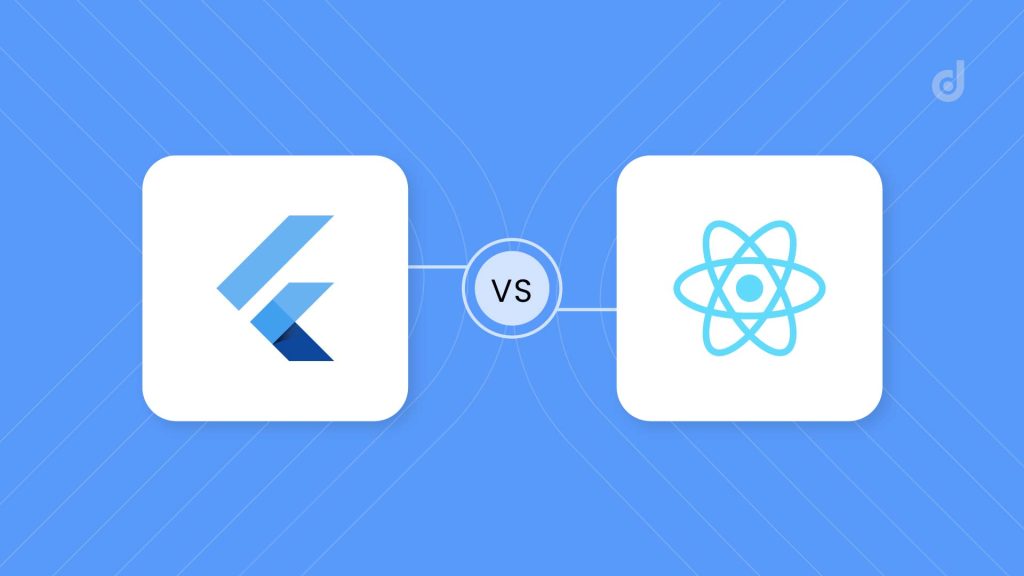In today’s mobile-driven world, crafting a high-quality app is crucial for business success. But with so many options available, selecting the right framework for development can be a daunting task. Two frameworks that have emerged as leaders in the cross-platform mobile app development race are Flutter and React Native. Both offer the enticing ability to build beautiful functional apps for iOS and Android using a single codebase. This eliminates the need to develop and maintain separate codebases for each platform, saving time and resources.
However, deciding between Flutter vs React Native requires a deeper understanding of their unique strengths and weaknesses. This blog post will be your guide, unravelling the intricacies of each framework and helping you choose the one that best suits your project’s specific needs. We’ll delve into their core functionalities, programming languages (Dart vs JavaScript), performance capabilities, and the vibrant developer communities behind them.
Understanding Flutter and React Native
Before diving into the specifics of Flutter vs React Native, let’s establish a clear understanding of what each framework brings to the table.
Flutter: Building Beautiful Apps from the Ground Up
Flutter is a comprehensive UI framework developed by Google. It empowers developers to create visually stunning and high-performance apps for iOS and Android using a single codebase. Unlike React Native, which relies on native UI components, Flutter boasts a unique approach. It utilizes its own rendering engine, built with Dart, to paint every pixel on the screen. This allows for unmatched control over the user interface and exceptional performance that rivals native apps. Flutter leverages pre-built widgets, and reusable UI building blocks, to streamline the development process and ensure a consistent look and feel across platforms.
React Native: Bridging the Gap Between Web and Mobile
React Native, on the other hand, takes a different approach. It leverages JavaScript, a widely popular web development language, to build mobile app interfaces. Instead of directly rendering UI elements, React Native utilizes native components provided by the underlying platform (iOS or Android). This approach allows developers with existing JavaScript expertise to transition smoothly into mobile app development. React Native also benefits from a vast ecosystem of third-party libraries and plugins, offering pre-built functionalities for common app features.
Programming Language: Dart vs JavaScript
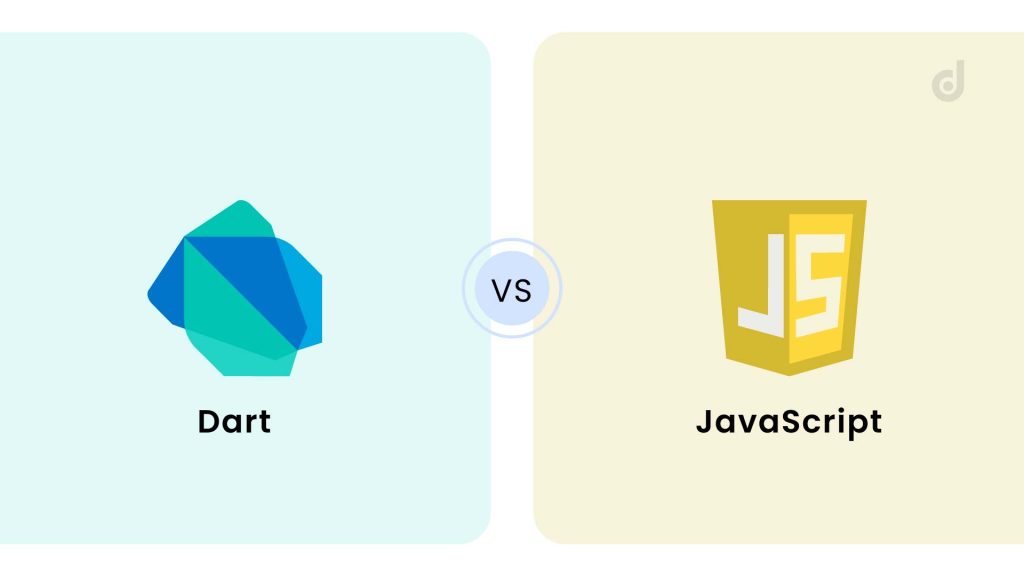
The choice between Flutter and React Native also hinges on the programming language you or your development team are comfortable with. Flutter utilizes Dart, a modern, object-oriented language specifically designed for building complex UIs. Dart offers features like type safety, which can help catch errors early in the development process, potentially leading to more stable and performant apps.
React Native, on the other hand, leverages JavaScript, one of the most popular programming languages in the world. This makes it a familiar choice for web developers looking to expand their skill set into mobile app development. However, JavaScript is not without limitations in the mobile development context, as it lacks type safety.
Market Overview: Flutter vs React Native
The landscape of cross-platform mobile app development is constantly evolving, with Flutter and React Native vying for dominance. While both frameworks offer significant advantages, recent trends suggest a shift in popularity.
According to a Stack Overflow Developer Survey, Flutter has gained significant traction in recent years. In 2023, it edged slightly ahead of React Native in terms of usage among developers (9.12% vs 8.43%). This trend seems to be continuing, with Flutter potentially solidifying its lead.
However, it’s important to remember that popularity doesn’t necessarily equate to being the “better” framework. React Native still boasts a strong presence in the market, with a loyal developer community and a mature ecosystem of libraries and plugins. According to a 2022 developer survey by Statista, 46 percent of software developers are using Flutter. React Native held a 32% compared to Flutter’s 46%. While these numbers might have shifted slightly in favour of Flutter since then, they highlight the ongoing competition between the two frameworks.
Ultimately, the choice between Flutter and React Native depends on your specific project requirements and team skill set. We’ll delve deeper into the strengths and weaknesses of each framework in the following sections, helping you make an informed decision.
Deep Dive into Flutter
Flutter has emerged as a compelling contender in the cross-platform mobile app development arena. Let’s explore the key benefits that make it a desirable choice for many developers:
Benefits of Flutter:
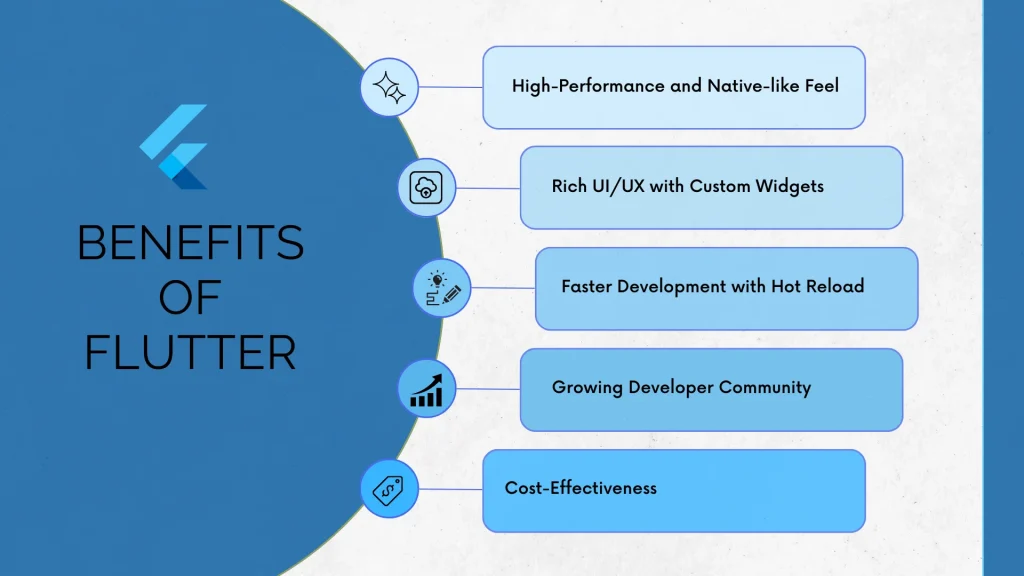
1. High-Performance and Native-like Feel
One of Flutter’s biggest advantages is its exceptional performance. By utilizing its own rendering engine, Flutter bypasses the need for a “bridge” to communicate with native components, leading to smoother animations, faster scrolling, and a more responsive user experience that rivals native apps.
2. Rich UI/UX with Custom Widgets
Flutter empowers developers to create unique and visually stunning user interfaces. Its extensive library of pre-built widgets, along with the ability to create custom ones, offers unparalleled flexibility in crafting a truly custom design that sets your app apart.
3. Faster Development with Hot Reload
Another major benefits of Flutter is its hot reload functionality. This feature allows developers to see code changes reflected in the running app almost instantly, significantly accelerating the development process. This eliminates the need to constantly rebuild and redeploy the app, saving valuable time and effort.
4. Growing Developer Community
While Flutter is a relatively young framework compared to React Native, its developer community is rapidly expanding. This means there’s a growing pool of resources, tutorials, and forums available to assist you in your development journey. Additionally, Google’s backing of Flutter ensures its continued development and a bright future.
5. Cost-Effectiveness
By building a single codebase for Android and iOS, Flutter can potentially lead to cost savings by reducing the development time and resources needed to maintain separate codebases for each platform.
Limitations of Flutter:
1. Relatively Young Framework
Compared to React Native, Flutter is a newer framework. This translates to a smaller existing library of third-party plugins compared to its competitors. While the Flutter library is constantly growing, there might be specific functionalities you require that currently lack a readily available plugin solution.
2. Learning Curve for Dart
If your development team isn’t familiar with Dart, there will be a learning curve involved in adopting Flutter. While Dart is considered a relatively easy language to pick up, it’s still an additional hurdle compared to React Native’s use of JavaScript, a language many web developers are already comfortable with.
Deep Dive into React Native
React Native has established itself as a dominant force in cross-platform mobile app development. Let’s explore the key advantages that make it a trusted choice for many developers:
Benefits of React Native:
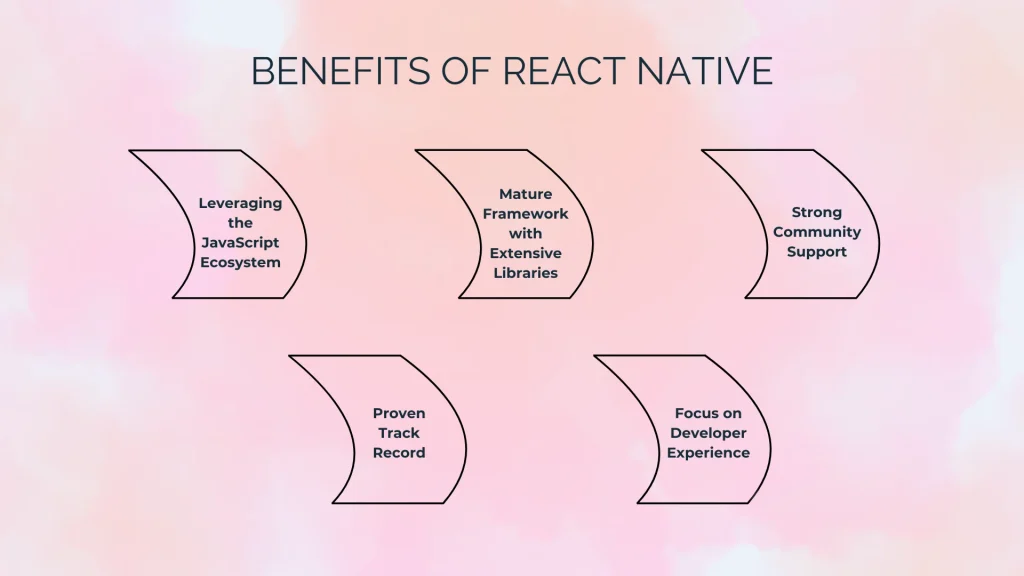
1. Leveraging the JavaScript Ecosystem
React Native’s strength lies in its utilization of JavaScript, one of the most popular programming languages in the world. This makes it an attractive option for developers with existing web development expertise in JavaScript or frameworks like ReactJS. The vast pool of JavaScript developers translates to a readily available talent pool for React Native projects.
2. Mature Framework with Extensive Libraries
React Native boasts a significant advantage in terms of its existing library ecosystem. Over the years, a rich collection of third-party libraries and plugins has been developed, offering pre-built functionalities for various app features. This extensive library can significantly accelerate development by providing readily available solutions for common mobile app needs.
3. Strong Community Support
React Native has a large and active developer community. This translates to a wealth of resources readily available online, including tutorials, documentation, and forums. Developers can easily find solutions to problems or connect with other developers for guidance and support. This strong community fosters continuous innovation and problem-solving within the React Native ecosystem.
4. Proven Track Record
React Native has been around for longer than Flutter and has been used to build a wide range of successful mobile apps. This proven track record demonstrates its ability to deliver high-quality and performant apps across various industries. Notable examples include Facebook, Instagram, and Skype, showcasing the power and reliability of React Native.
5. Focus on Developer Experience
React Native offers a developer-friendly experience with tools like hot reloading, similar to Flutter. This allows developers to see code changes reflected in the running app almost instantly, streamlining the development workflow and improving productivity.
Limitations of React Native
1. Performance Considerations
Compared to truly native apps, React Native apps might experience slight performance limitations. This is because React Native bridges the gap between JavaScript code and native UI components, which can introduce some overhead.
2. Debugging Native Issues
Debugging issues that originate in the native layer (iOS or Android) can be more complex in React Native compared to native development. This is because developers need to navigate between the JavaScript and native code environments.
3. Limited UI Customization
React Native relies on native UI components, which might limit some design flexibility. While there are ways to achieve custom UI elements, it might require more effort compared to Flutter’s complete control over UI rendering.
By carefully weighing these pros and cons, you can determine if React Native aligns with the specific needs of your mobile app project.
Head-to-Head Comparison: Flutter vs React Native
Now that we’ve delved into the strengths and weaknesses of both Flutter and React Native, let’s take a closer look at how they compare across key aspects:
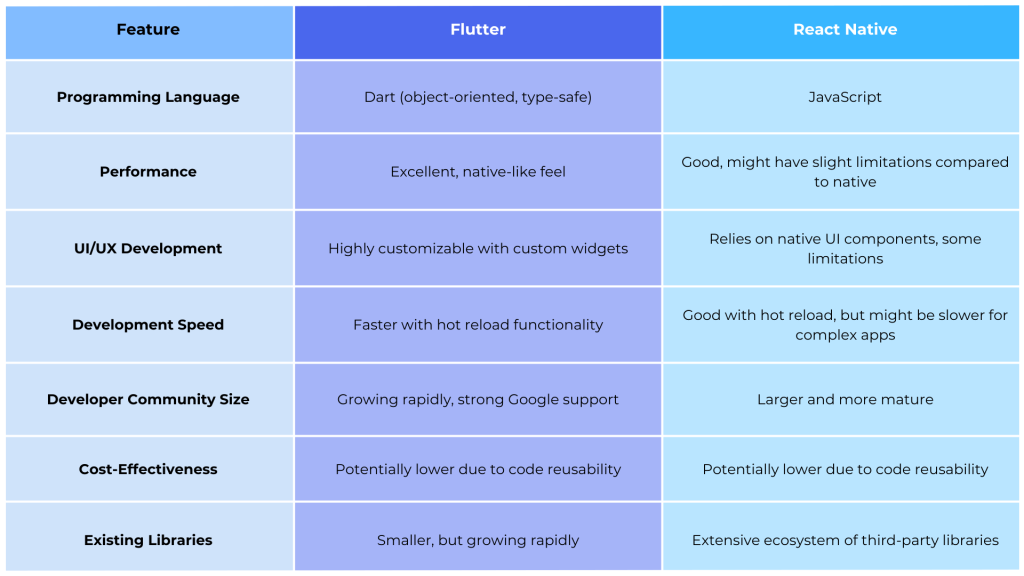
Here’s a breakdown of some key observations from the table:
- Programming Language: Flutter’s Dart offers type safety, potentially leading to fewer errors and more stable apps. However, JavaScript’s popularity in web development might make it a more familiar choice for some developers.
- Performance: Flutter excels in performance, delivering a native-like feel. While React Native offers good performance, there might be slight limitations compared to truly native apps.
- UI/UX Development: Flutter empowers developers with more control and customization over the UI. React Native relies on native UI components, which might limit some design flexibility.
- Development Speed: Flutter’s hot reload functionality can significantly accelerate development. While React Native offers hot reload as well, complex apps might take longer to develop.
- Developer Community: Both frameworks have active communities. Flutter’s community is rapidly growing with strong Google support. React Native boasts a larger and more mature community.
- Cost-Effectiveness: Both frameworks can be cost-effective due to code reusability. However, the smaller library size in Flutter might necessitate more custom development in some cases.
- Existing Libraries: React Native’s vast library ecosystem can save development time by providing pre-built solutions for many common functionalities. Flutter’s library is growing, but it’s still catching up.
Choosing the Right Framework: Flutter vs React Native
Selecting the right framework for your mobile app development project hinges on understanding your specific needs and priorities. Here’s a breakdown to guide you towards the most suitable option:
When to Choose Flutter:
1. Prioritize Performance
If exceptional performance and a native-like feel are paramount for your app, Flutter is the ideal choice. Studies have shown Flutter apps achieving frame rates exceeding 60 FPS, ensuring a smooth and responsive user experience.
2. Unique and Custom UI
Do you envision a highly customized and visually distinct user interface for your app? Flutter’s widget-based approach empowers developers to craft unique UIs that perfectly match your brand identity.
3. Rapid Development
Is a fast development cycle crucial for your project? Flutter’s hot reload functionality significantly accelerates the development process, allowing developers to see code changes reflected almost instantly. This can be a major advantage, especially for projects with tight deadlines.
4. Team Familiar with Dart
If your development team is already comfortable with object-oriented languages or has experience with Dart, then Flutter becomes a natural fit. The learning curve for Dart is generally considered less steep compared to mastering a completely new paradigm.
Popular Flutter Apps Examples:
- Alibaba (e-commerce platform)
- Stadia (cloud gaming platform)
- Reflectly (journaling app)
When to Choose React Native:
1. Leverage Existing JavaScript Expertise
Does your development team possess a strong foundation in JavaScript and web development? React Native seamlessly integrates with existing JavaScript knowledge, making it a familiar and efficient choice. This can significantly reduce onboarding time and leverage your team’s existing skillset.
2. Extensive Library Ecosystem
React Native boasts a vast collection of third-party libraries and plugins. This extensive ecosystem can significantly accelerate development by providing pre-built solutions for various functionalities commonly found in mobile apps. Statistics suggest React Native has over 1000 open-source libraries, showcasing the breadth of its resources.
3. Mature Framework with a Proven Track Record
React Native has been around for longer and has been used to build a wide range of successful mobile apps, including industry giants like Facebook, Instagram, and Skype. This proven track record demonstrates its ability to deliver high-quality and performant apps across diverse use cases.
4. Prioritize a Large Developer Community
React Native benefits from a large and active developer community. This translates to readily available resources online, including tutorials, documentation, and forums. Developers can easily find solutions to problems or connect with other developers for guidance and support, especially beneficial for complex projects.
Popular React Native Apps Examples:
- Facebook (social media platform)
- Instagram (photo and video sharing platform)
- Skype (video communication app)
Note: There’s no single “best” framework. By carefully considering your project’s requirements, team skill set, and priorities, you can make an informed decision and leverage the strengths of either Flutter or React Native to build a successful mobile app.
Wrapping Up: Choosing the Future of Your Mobile App
The battle between Flutter and React Native is a close one, with both frameworks offering compelling advantages for cross-platform mobile app development. Ultimately, the best choice depends on the specific needs of your project.
This blog post has equipped you with the knowledge to make an informed decision. Consider factors like performance requirements, desired UX/UI customization, development speed, and your team’s existing skill set.
If you’re still unsure about which framework is the right fit for your mobile app project, don’t hesitate to reach out to the experts at Digimonk Solutions. Our team of experienced mobile app developers can help you navigate the intricacies of Flutter vs React Native and guide you towards the optimal solution. Contact Digimonk Solutions today and take the first step towards building a successful mobile app!
